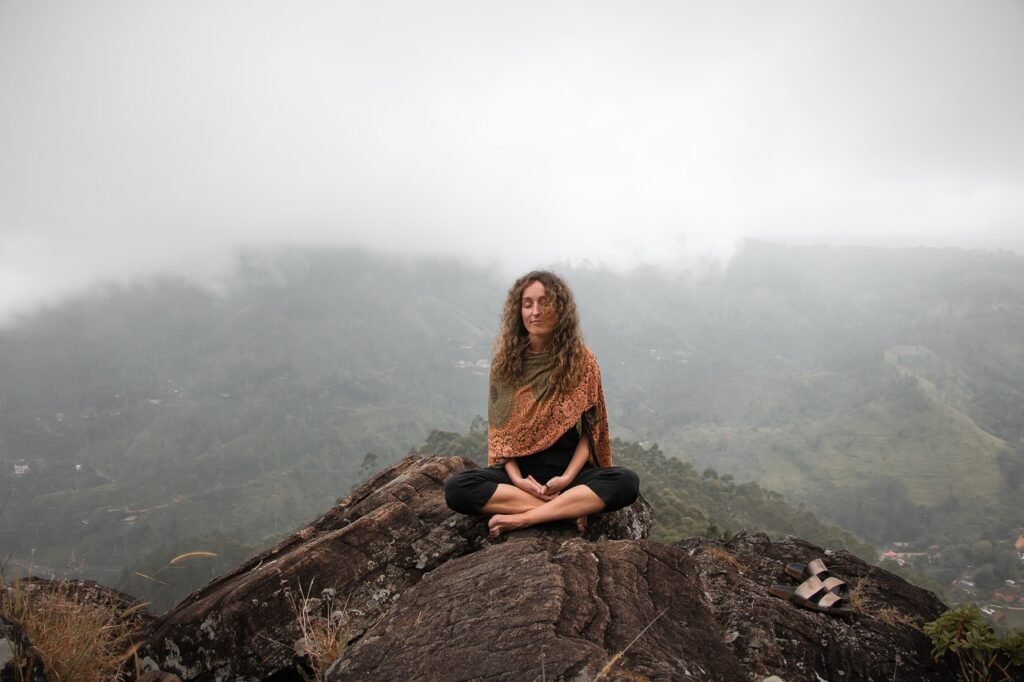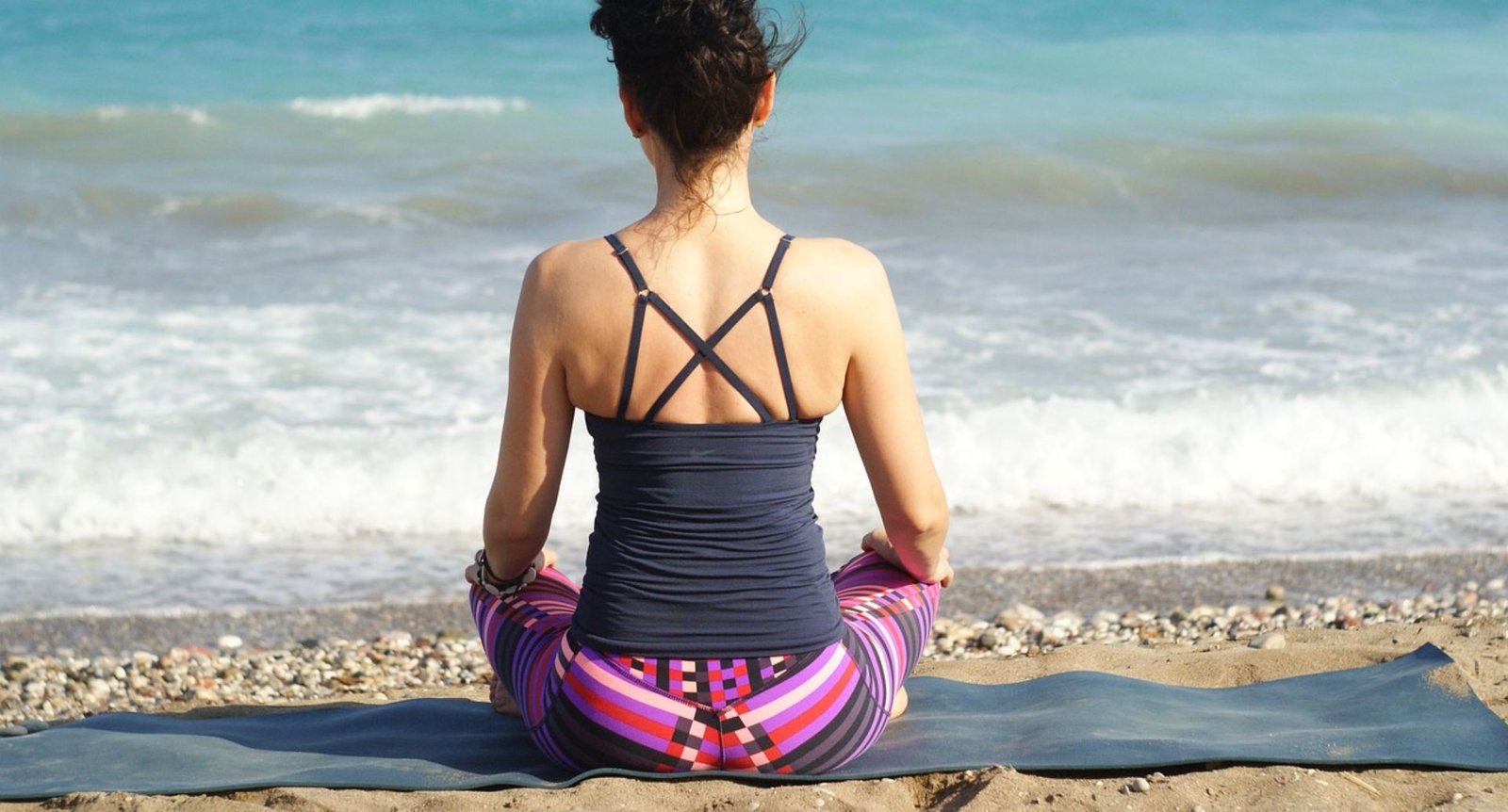What is Yoga?
Yoga is an ancient system of practices used to balance the mind and body through exercises, meditation and control of breathing and emotions.
Contents
The Origin of Yoga
The sun rises from the East and sun sets from the West. In the beginning of the human world, there was darkness and this so called darkness was covered with darkness. According to Indians, then came the light with the word ‘Om’, which gave rise to knowledge and words. In the hierarchy of ancient vedas, there are four vedas. Such as;
1) Rigveda
2) Samveda
3) Yajurveda
4) Athaveda
And then comes four sub – vedas. Known as;
1) Ayurveda
2) Arthaveda
3) Dhanurveda
4) Gandharvaveda
According to that, there are six components. Namely,
1) Shiksha
2) Kalpa
3) Vyakarana
4) Nirukta
5) Chandas
6) Jyotisha
And also this follows more six subordinate components.
1) Nyaya
2) Vaiseshika
3) Sankhya
4) Yoga
5) Mimansa
6) Vedanta
Out of all these, YOGA is the Art of Living. Yoga can also be categorized into several types. Like;
1) Gyan Yoga
2) Bakthi Yoga
3) Karma Yoga
4) Hatha Yoga
5) Raj Yoga
6) Manthra Yoga
7) Shiva Yoga
8) Naada Yoga
9) Laya Yoga
and many more…
The word ‘Yoga’ comes from a Sanskrit word ‘Yuj’ which gives the meaning of union of individual practitioners and universal consciousness. Also Yoga can be defined as the Divine Portal of one’s life. In yogic and Hindu philosophy The Divine Mother is a concept that refers to the feminine aspect of the prime creator of the universe, or the spiritual spark of all life.
The Rigveda is one of the most sacred and the oldest book of human history according to Hindus. It is about 10,000 years old. And YOGA is a part of this vedic literature. “Maharishi Patanjali” is considered to the authority on YOGA. Lord Krishna and many saints of India have also spoken about Yoga 5,000 years back. In the middle ages of history, Yoga was only practiced by the royal and higher class people. It was taught to students after passing a vigorous test. By the time, with the effort of the religious leaders and spiritual leaders of India, Yoga have been opened to the common man.
Yoga is the Union of body, mind and spirit which brings harmony of thoughts, words and deed. Maharishi Patanjali, the propounder of Yoga, elusidated eight limbs of Yoga. Known as;
1) Yama – social ethics
2) Niyama – personal ethics
3) Asana – postuers
4) Pranayama – directing life force
5) Prathyahara – turning the senses inward
6) Dharana – one pointed focus
7) Dhyana – meditation
8) Samadhi – merging with the self
However, by the current time, Yoga practices has become only related with physical postuers ( Hatha Yoga ) whereas the central teaching of Yoga is maintaining an equanimous state of mind. The Bhagavath Geetha says, “Yogah Karmasu Kaushalam” which means “Yoga is not just an exercise.” It is how skilfully we communicate and act with society in any situation. In detail, Yoga is more described as a mind skill.
For example :- A person doing his job at ofdice with pleasure. Watching the surrounding with a calm relaxing heart. Cooking at home with a happy mood.etc
If a person does any action whole heartedly with love, then that person is a Yogi or a Yogini.
But in case, if a person does everything in bad mood, without love or care, then he us not a Yogi or a Yogini.
Once Lord Krishna said, ” Samathvam Yiga Uchyate ” meaning, “equanimity in the mind” is a sign of Yoga. A person’s ability to be self – centred in any situation, is Yoga. No matter what is the result of the situation, accepting the result with harmony, joy and love is Yoga. Physical practice of Yoga makes our body healthy . Pranayama (directing life force) and Dhyana ( meditation) takes our mind deep to our souls. That means, ” Uniting diverse aspect of life of existence is Yoga.”
How to do Yoga?
Practising Yoga does nkt matter the age of a person. Yoga can be done in two ways easily. One is mentally by meditating and the other method is physically by following exercises. If an old person need to follow or practice Yoga he/she can practice Yoga Meditation which is done without moving the body.
Process :- You may choose a suitable place in a calm area and then get into a comfortable position, either sitting of lying down. Then let your thoughts and feelings pass peacefully without judging them. Keep your eyes closed and your palms must be turned upward. Just concentrate on your breath. You may feel relaxed in your body and mind.
As for the younger’s, they are physically fit and they have the ability to do the exercises. Make sure to breathe at each move. Few Poses you need to know when you are practising Yoga;
1) The Child’s Pose
2) Plank Pose
3) Downward – facing dog Pose
4) Cobra Pose
5) Tree Pose
6) Traingle Pose
7) Bridge Pose
8) Corpse Pose
Above mentioned are few poses that you can do easily at home.
Benefits of Yoga
Mental Health Benefits
- Relive stress
- Lower anxiety levels
- Decrease depression
- Improve sleep quality
- Enhance quality of life
- Relaxation
- Mindfulness
- Being present Physical Health Benefits
- Posture
- Energy
- Flexibility
- Health
- Strength
- Resilience
- Positive impact on digestion and blood pressure As an overall wellbeing
- Improved sleep
- Postivity
- Restful
- Calmness
- Connection
Meditation
What is Meditation?
Meditation is a mental exercise that involves relaxation, focus and awareness. Meditation is usually done for the mind and practiced by an individual, sitting still with eyes closed(maithree bhavana) or walking in a very calm manner( sakman bhavana).

The Origin of Meditation
A sunflower is so bounded to the sun, it turns at the direction it goes. So we, the human being of this universe must be downward to the soil. To become a self-centred person, we can practise meditation. Actually, Meditation has no any proper origin. The word ‘meditation’ was moderated by the Latin term ‘meditatum’ which means ‘to ponder’. By practising meditation in daily life we can seek perfection.
Meditation is an ancient practice that is believed have originated in India long long time ago in earliest written records from Hindu traditions in India around 1500BC of Vedatism. Vedatism is an old philosophy which is known as the path for spiritual enlightenment within Indians. The practice of Dhyana (meditation) is to be refered as the training of the mind.
Not only in India but also in other eastern and western countries, meditation is practiced from early ages. In early China meditation is practiced by the ancient Chinese philosophers. Like; Daoist, Laozi in 3rd century and 6th century BC respectively. And for the western countries, Zhuangzi from late Warring State practiced meditation. But, unfortunately the reality is no one knows the exact origin of meditation. The precise origins are heavily debated, especially around Buddhism.
Types of Meditations
Meditation can lead us to discover a sense of calmness and inner harmony. Meditation is practiced by different religious and cultures. It’s all about being more mindful, focused, peaceful, more aware of our thoughts, speech and actions. This is a good path to relieve stress. There are many different kinds of meditations. Few are;
- Spiritual Meditation
Spiritual include the element of silent, spoken and chanted prayer. When you practice meditation with the support of a religion it leads your path towards the Divine Portal. In religions like Buddhism, meditation is more concentrated about self-awareness, self-actualization and self-confidence. True spiritual meditation is been practiced with love, kindness and compassion. - Mindful Meditation
Mindful Meditation is about paying attention to your thoughts. When you are meditating with your thoughts you don’t judge them but you just realise the case or note down the problem carefully. While doing this you may concentrate with the matter and find the helpfulness of breathe to observe the case in peacefully. - Walking Meditation
In walking meditation, instead of concentrating of your breathe you have to be aware of the way you land, heeling, stepping the other foot and this encourages you to pay or focus on walking in a calm manner. Walking Meditation cultivate the sense between mind and body. - Loving – Kindness Meditation
This is practiced to increase or strengthen the feeling of compassion, kindness and acceptance of oneself towards other people. It means a person improves his quality of spreading love towards others with positive comments and well wishes. Loving – Kindness Meditation is really helpful for the people who easygo and short-tempered. - Mantra Meditation
Mantra Meditation is based on continuous repetition of suttras, mantras, phrases or any religious words in silently or aloud. This is normally practiced by any person and it can be done at any time even without any religious content. This decreases the anxiety and reduce depression. - Visualisation Meditation
This is to imagine someone or something in your mind. Here, we can connect our imaginary world with our breath. It us really easy to be done because we just have to recall things in our memory. This is not only specified with the mind but also with our physical sensation.
Benefits of Meditation
Keeps you feel less stress.
- Reduce ageing.
- Adds more time to your day.
- Helps to appreciate life and others.
- Helps to feel more connected.
- Makes you and others feel more happier.
- Improves brain functioning.
- Helps you to have a good sleep.
- Increase immunity to fight with disease.
- Regular heart rate.
Difference between Yoga and Meditation
Yoga is to be a way of life and that practice gives you all around benefits. Meditation is a part of Yoga bit it deals with mental relaxation and concentration.
- Yoga corporates with many physical movements but meditation is a sitted concentrated training.
- Yoga improves your flexibity and Meditation manages stress.
- Yoga is physically exhausting and Meditation is more peacefully done.
- Yoga covers all forms of stability both mental and physical but meditation only deals with mental stability.
Places where you can practice Yoga in Sri Lanka
Accordingly, when you are practising Yoga, you must have a calm and quite surrounding with a good ventilation. Plus a brilliant guidance. Now in Sri Lanka Yoga is playing a significant role in our society. Any local or international visitor can practice Yoga as they want without any interruption. Many places in Sri Lanka offer guests the opportunity to escape from their busy and tiresome life using Yoga and attain peace on the vacation without any issue.
Few famous places to practice Yoga;
1) Soul and surf Sri Lanka – Ahangama.
Facilities – Pool facilities, huge Yoga room, restaurant facilities, laundry facilities, airport transportation and no smoking allowed with the restricted area.
2) Sri Yoga Shala – Unawatuna
Facilities – Regular yoga classes, training with excellent guides, therapy and massage.
3) Rukshan Yoga – Mirissa
Facilities – Sea view for pleasure and relaxation, opportunity to learn with skilled monks and peace and solace surrounding.
4) Prana Lounge Holistic Health and Yoga Centre – Colombo
Facilities – Clinic for a variety of complementary health practices with Ayurveda( eastern/ herbal medicine )
5) Green Peace Inn – Mathara
Facilities – Natural surface, earthly tone, morning to night yoga sessions (you can join any session you are comfortable).
6) Doowa Yoga and Ayurveda Retreat Centre – Kandy
Facilities – Emphasis breathing capacity, analysis of mental capacity, related with eastern traditions.
Above mentioned are few places that has a vast tourists attraction or places considered as tourists destinations within Sri Lanka to practice Yoga for any international visitor or traveller to Sri Lanka.
Places where you can practice Meditation in Sri Lanka
1) International Vipassana Meditation Centre – Colombo 07
Facilities – long time experience, specilized in Vipassana meditations, Lord Buddha’s noble teaching to all races and religions.
02) Nilambe Meditation Center – Kandy ( Galaha )
Facilities – long time experience, should be started from the beginning ( not from the middle ) and completed fully.
3) Mahamewna Meditation Centers – Island wide in Sri Lanka
Facilities – huge areas with high capacity halls, 24 hours calm and quiet surroundings, free for anyone to arrive and engage in meritorious deeds.
Meditation is practiced by Sri Lankans more that Yoga, therefore you can find plenty of places to practice Meditation without any interrupt and you will have many skilled and talented monks or spiritual leaders to lead or guide you.
Sri Lanka is highly recommended hospitable country, so that you can have many relaxed mindset to practice you meditations or yoga in Sri Lanka because people will help to you at anytime in any place. The highlighted key point is that any traveler, foreigner or visitor who engaged in Yoga or Meditation will not get any kind of interruption or disturb to their daily routine or basis because Sri Lanka has sufficient of good places to do your needs and wants as you want.













